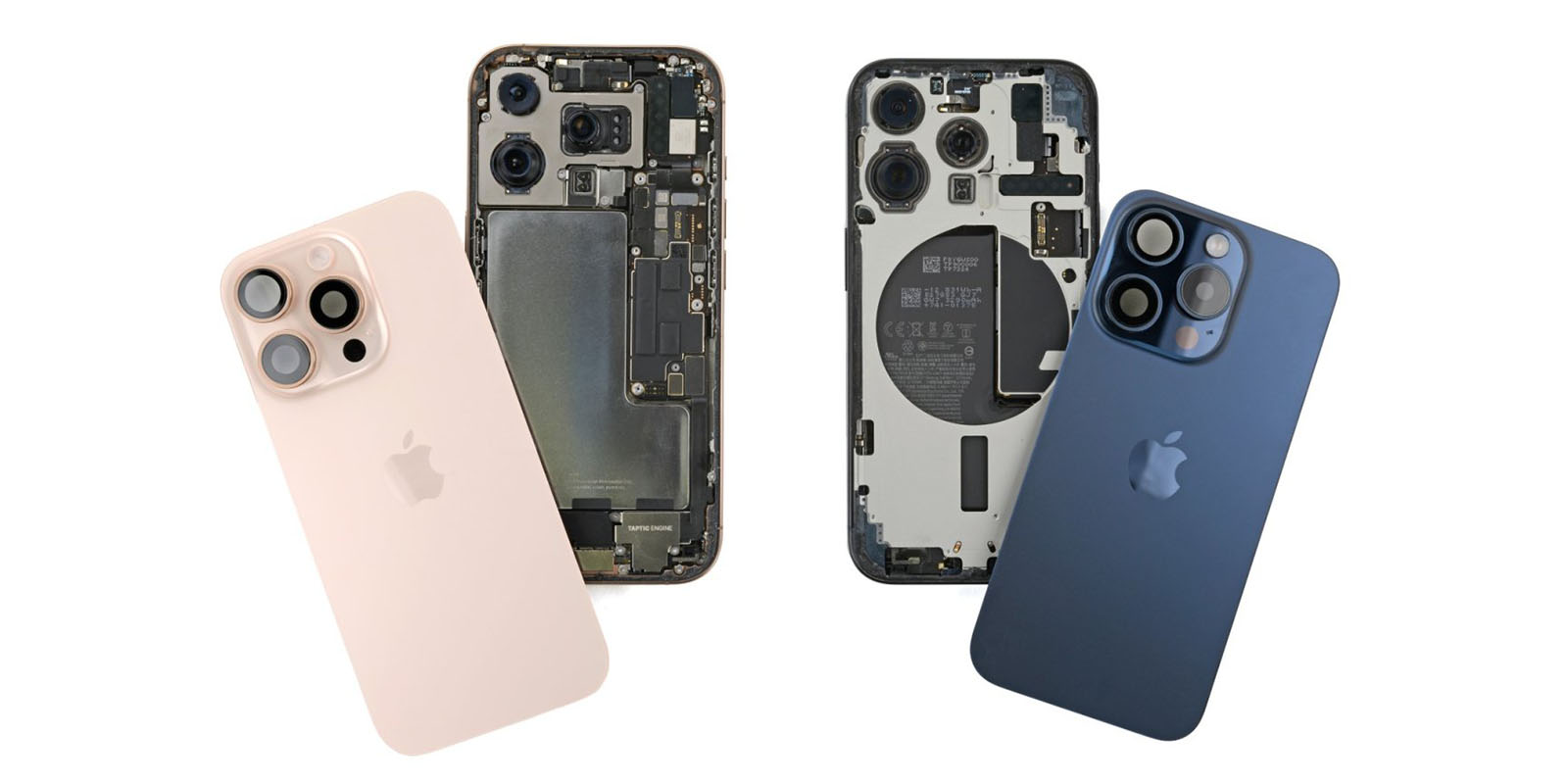
The iFixit iPhone 16 Pro teardown video is now up (below), and the company has highlighted some differences over last year’s model. This follows its earlier teardown of the standard and Plus models.
Top of the list, and exclusive to the iPhone 16 Pro, is a new type of battery. Apple has also had to make a compromise in order to create room for the Camera Control button …
Larger-capacity, fully-cased battery
iFixit says that while there’s no change to the type of battery used in the iPhone 16 and Plus models, the iPhone 16 Pro gets a fully-encased battery.
This isn’t a battery we’ve seen in the 16 or the 16 Plus. The iPhone 16 Pro’s battery is fully encased, just like Apple Watch batteries we’ve seen, and the batteries continue to use stretch-release adhesive to glue themselves to the frame.
The obvious benefit of the metal-encased battery is that you can accidentally poke it to your heart’s content and it won’t pose a fire risk.
That, says the company, makes repairs both easier and safer.
Yet despite the space needed for the metal casing, the battery capacity is higher than last year. Coming in at 13.94 Wh, the iPhone 16 pro battery actually bigger than the 12.7 Wh battery in the iPhone 15 Pro. That’s surprising considering the additional material surrounding the 16 Pro battery.
iFixit speculates that perhaps metal-enclosed batteries don’t need to allow the same amount of space around them for potential swelling.
Camera Control compromise: Antenna removed
All four models have seen one of the 5G mmWave antennae removed, to create space for the Camera Control button. The company says this shouldn’t be an issue for the non-Pro models, with their aluminum chassis, but might pose a challenge for the dense titanium frame used for the Pro and Pro Max.
However, Apple has sought to compensate for this.
The solution? Move the antenna up and closer to the outer edge, specifically a hollowed-out section near the top of the phone which appears to have been widened specifically for this purpose.
5G mmWave reception will likely still suffer, but as iFixit wryly notes, that’s not exactly a big deal.
My guess is that high-band 5G signal strength will still suffer and that’s going to suck for the 12 people in the US that use mmWave on the regular.
5G mmWave has really short range, meaning it can only be offered in really high-traffic areas like shopping malls, and even then it requires a lot of base stations. The evidence is that carriers simply haven’t chosen to invest in the necessary infrastructure, so 5G mmWave coverage is mostly not a thing.
Repairability
Since last year, Apple has made big strides in making iPhones easier to repair. In particular, you no longer need to remove the screen in order to access the components behind it.
Just like the regular iPhone 16 and 16 Plus, Apple has made repair guides available on day one, a very welcome development where repairability is concerned.
We also have a dual-entry design that allows for repairs without removing the screen, and battery pull tabs, that while fallible, and not as easy as the new electrochemical process, make battery removal easier.
On top of those nice design features, we have the latest iOS 18 update that allows the majority of parts inside the iPhone to be freely replaced with other OEM parts.
While last year’s iPhone 15 Pro Max was given a repairability rating of just 4/10, iFixit rates both iPhone 16 Pro and Pro Max repairability at 7/10.
Check out the full iPhone 16 Pro teardown below.
Image: iFixit
FTC: We use income earning auto affiliate links. More.



Comments